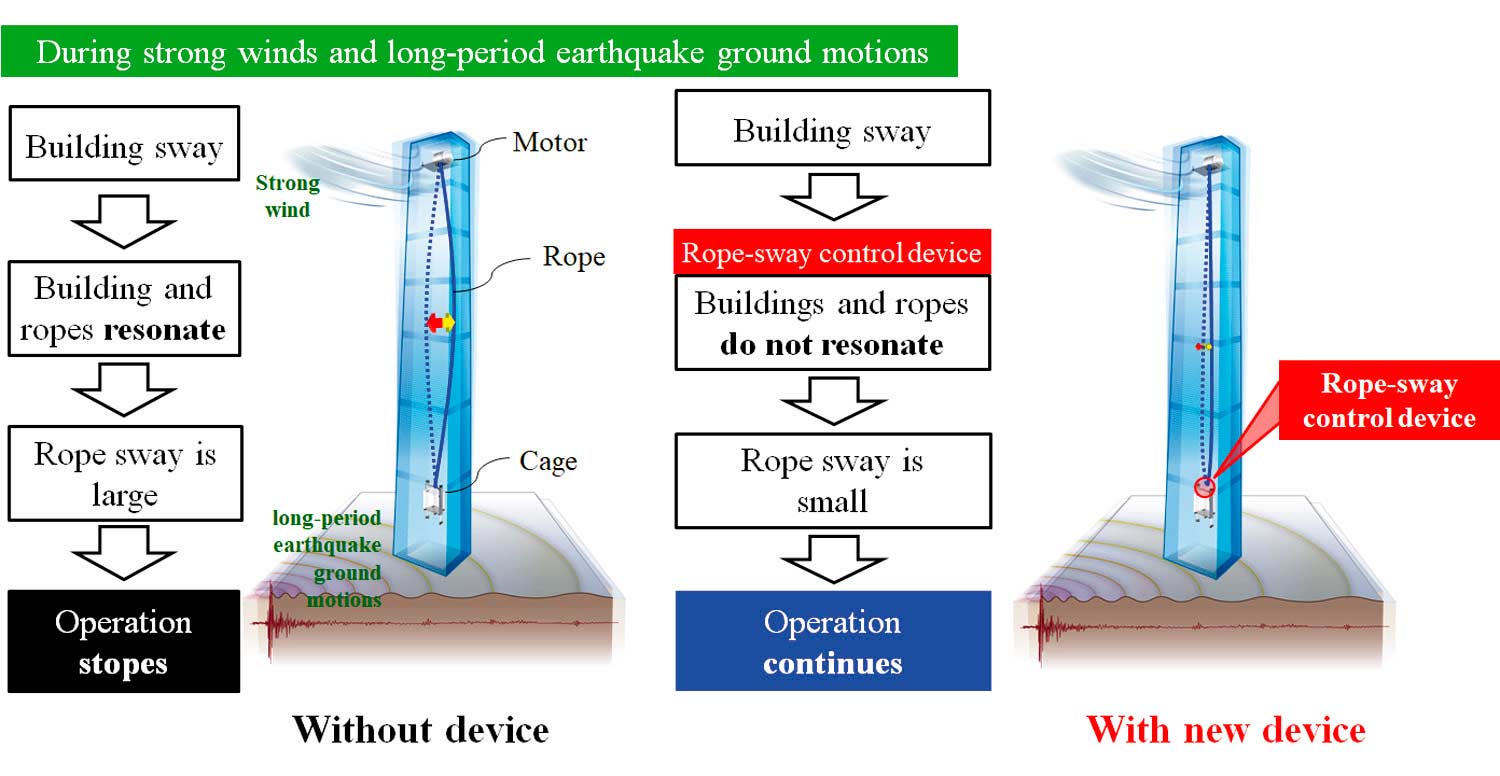Mitsubishi Electric’s new device offers stability in strong winds, long-term earthquakes.
Mitsubishi Electric has developed a device that passively controls rope sway for elevators in high rises that sway due to strong winds or long-term earthquakes. Th e company says that by enabling elevators to continue operating under such conditions, the Passive Rope-Sway Control Device for Elevators will help stabilize elevator operations and contribute to greater user convenience. It applies a magnetic force, called “negative stiff ness,” to the bottom end of the rope. Th is principle applies a force in the opposite direction against a normal spring’s restoring force. Th e magnetic force of permanent magnets is used to amplify the swing of the rope terminal at the top of the car in accordance with the amplitude.
The negative stiffness force acts in the same direction as the rope sway, increasing the sway amplitude at the rope terminal as if the terminal’s position were unfixed. (A rope with one free end has a lower resonance frequency [the frequency at which it tends to sway] than a rope with two fixed ends.) As a result, the building and rope sway at different frequencies, so they do not resonate, and rope sway is greatly suppressed. The use of permanent magnets enables elevator operation to be stabilized without using electrical energy.
Mitsubishi Electric adds that it has successfully conducted vibration damping tests on actual elevators under simulation of a building swaying due to a long-term earthquake. This demonstrated that, compared to a rope without a passive rope-sway control device, rope sway could be reduced by at least 55%. In the absence of any damping device, rope sway exceeded the company’s recommended threshold for suspending elevator operation. When the damping device was applied, however, rope sway fell below the threshold. www.mitsubishielectric.com
Get more of Elevator World. Sign up for our free e-newsletter.










